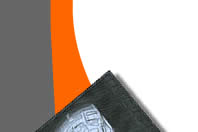|
| Introduction | Common Lengths | Conversion Process | Rates |
Introduction
 To counter the introduction of the Super-VHS format, Sony introduced Video Hi8 (short for high-band Video8). Like S-VHS, Hi8 used improved recorder electronics and media formulation to increase the recorded bandwidth of the luminance signal. To counter the introduction of the Super-VHS format, Sony introduced Video Hi8 (short for high-band Video8). Like S-VHS, Hi8 used improved recorder electronics and media formulation to increase the recorded bandwidth of the luminance signal.
Both Hi8 and S-VHS were officially rated at a luminance resolution of 420 horizontal TV/lines (560×480 in today's digital terms), a vast improvement from their respective base formats of 240 lines and roughly equal to laserdisc quality. Chroma resolution for both remained unchanged, at approximately 30 lines horizontal. Both S-VHS and Hi8 retained the audio recording systems of their base formats; VHS HiFi Stereo outperformed Video8/Hi8 AFM, but remained restricted to high-end machines.
 In the late 1980s, digital (PCM) audio was introduced into some higher grade models of Hi8 (but never S-VHS) recorders. Hi8 PCM audio operated at a sampling rate of 32 kHz with 8-bit samples—higher fidelity than the monaural linear dubbing offered by VHS/S-VHS, but vastly inferior to VHS HiFi. PCM-capable Hi8 recorders could simultaneously record PCM stereo in addition to the legacy (analog AFM) stereo audio tracks. In the late 1980s, digital (PCM) audio was introduced into some higher grade models of Hi8 (but never S-VHS) recorders. Hi8 PCM audio operated at a sampling rate of 32 kHz with 8-bit samples—higher fidelity than the monaural linear dubbing offered by VHS/S-VHS, but vastly inferior to VHS HiFi. PCM-capable Hi8 recorders could simultaneously record PCM stereo in addition to the legacy (analog AFM) stereo audio tracks.
8 mm video format. (2009, November 30). In Wikipedia, The Free Encyclopedia. Retrieved 04:23, December 8, 2009, from http://en.wikipedia.org/w/index.php?title=8_mm_video_format&oldid=328810973
Common Tape Lengths
- 1 hour SP mode
- 2 hour LP mode
Conversion Process
We ensure the best quality in every single process of the conversion. All conversions are done on professional high end players with real time full frame time base correction (TBC) and digital noise reduction (DNR). Video and audio signals are transmitted on thick cables with gold plated connectors. No power source is placed near the players. All these are to reduce the interferences into the electronic signals so as to capture the signal in its original form as best as possible.
Encoding of video to formats such as MPEG is based on the AVI captured file. The encoding is done using production quality conversion settings, which requires much more CPU processing power but gives a slightly better end result. We utilize quad core processor workstations to process your videos.
With all these, we always ensure audio and video synchronization is maintained throughout the whole process.
If we notice any major faults in the video, we will ask you before proceeding. At this point, you will not be charged a single cent if you decide not to continue with the conversion. Common major faults we've encountered are
- Badly damaged taped (we do not convert these)
- Snapping / tearing of tape
Rates
For conversion to VCD
| $15 |
1 |
$3 |
$18 |
| $30 |
2 |
$6 |
$36 |
| $45 |
3 |
$9 |
$54 |
For conversion to DVD (includes 5 minute chapter marks)
| $20 |
1 |
$8 |
$28 |
| $40 |
1 |
$8 |
$48 |
| $60 |
2 |
$16 |
$76 |
For conversion to other digital formats such as AVI, MPEG1, MPEG2, WMV and FLV
| AVI |
$20 |
| MPEG1 |
$20 |
| MPEG2 |
$20 |
| FLV |
$40 |
| WMV |
$20 |
You can also try our calculator. Or contact us for a quote.
|






